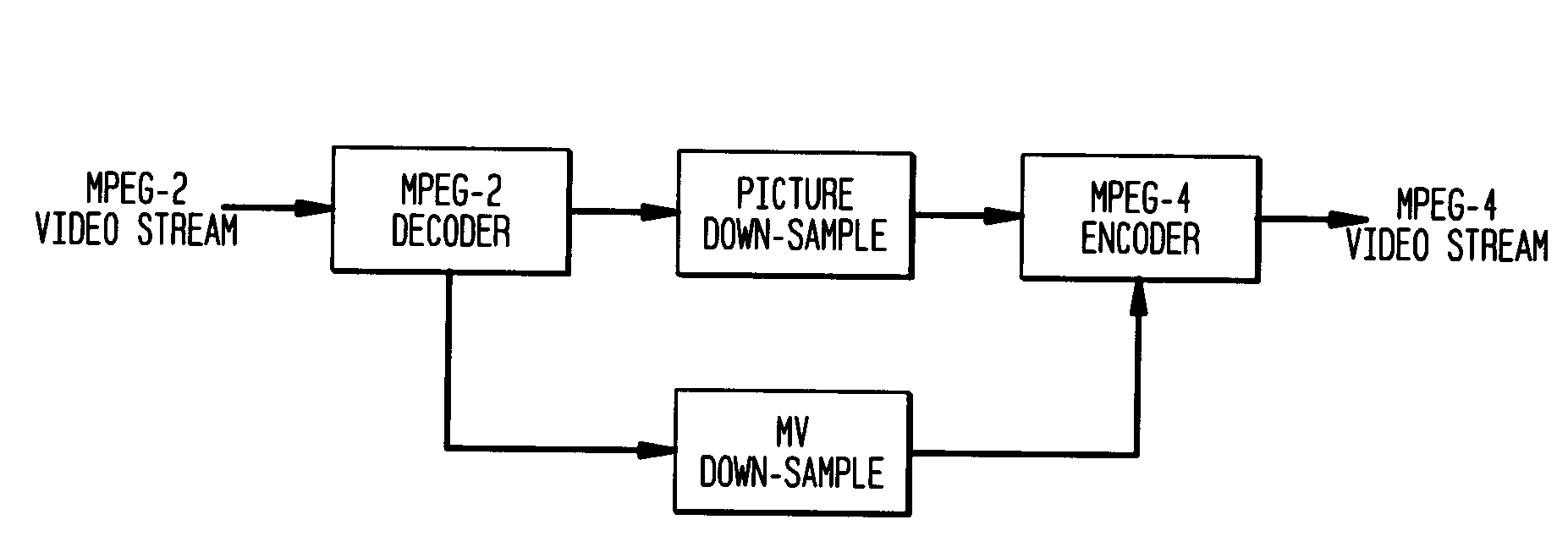Method for video transcoding with adaptive frame rate control
a frame rate control and adaptive technology, applied in the field of transcoders, can solve the problems of low complexity of tb>1/b> transcoder, primary loss in mpeg standards, and the space for novelty and variety of the algorithm employed in the encoder, and achieve good temporal-spatial quality tradeoff
- Summary
- Abstract
- Description
- Claims
- Application Information
AI Technical Summary
Benefits of technology
Problems solved by technology
Method used
Image
Examples
Embodiment Construction
Spatial Resolution and Motion Vector Down-Sampling Processes in Transcoding
[0059]Without loss of generality, consider the case of spatial resolution down-sampling shown broadly in FIG. 10 where the input is MPEG-2 video with a higher spatial resolution, (e.g. CIF (Common Intermediate Format) resolution 352×288, 4 CIF resolution 704×576, or 4 SIF (Source Input Format) resolution 720×480) while the output is MPEG-4 video with a lower resolution (e.g. CIF resolution 352×288 or QCIF (Quarter CIF) resolution 176×144). Hence, the MPEG-2 frame picture has to be down-sampled to fit the MPEG-4 image size, which is a typical case. The T2 transcoder is adopted so that the resolution down-sampling can be processed in the pixel domain. As shown in FIG. 4, the MPEG-2 video is down-sampled with 2:1 ratio in both vertical and horizontal directions so that the QCIF MPEG-4 frame image can be obtained.
[0060]FIG. 11(a) is a block diagram of a preferred embodiment of a transcoder pursuant to the present...
PUM
 Login to View More
Login to View More Abstract
Description
Claims
Application Information
 Login to View More
Login to View More - R&D
- Intellectual Property
- Life Sciences
- Materials
- Tech Scout
- Unparalleled Data Quality
- Higher Quality Content
- 60% Fewer Hallucinations
Browse by: Latest US Patents, China's latest patents, Technical Efficacy Thesaurus, Application Domain, Technology Topic, Popular Technical Reports.
© 2025 PatSnap. All rights reserved.Legal|Privacy policy|Modern Slavery Act Transparency Statement|Sitemap|About US| Contact US: help@patsnap.com



